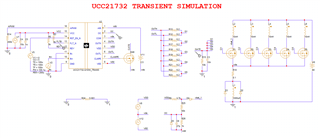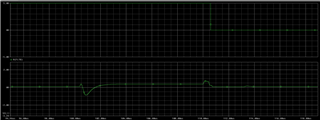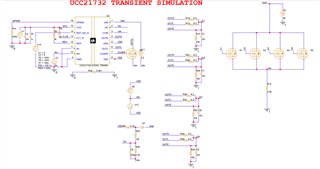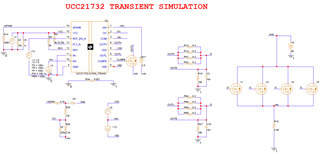Other Parts Discussed in Thread: UCC21750, UCC21710
Hi Team,
I'm currently working on Isolated gate driver design and I'm using UCC21732-Q1 to control the MOSFETs. While performing simulation in PSPICE, I see gate remains in HIGH state and FLT pin goes low when the IN+ changes the state from LOW to HIGH.
What might be the reason?

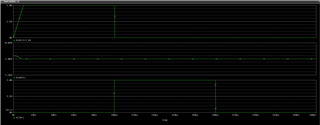
Any suggestions UCC21732-Q1DW_TRANSwould be appreciated.
Thanks.


